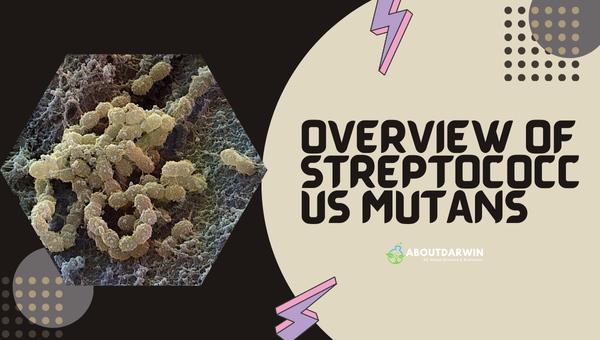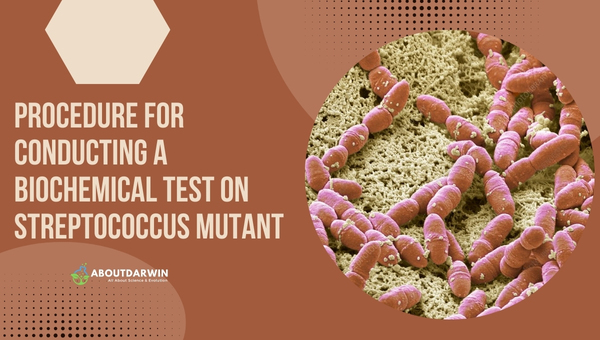Physical Address
304 North Cardinal St.
Dorchester Center, MA 02124
As someone delving into the endless abyss of microbiology, I often find myself fascinated by some noteworthy microorganisms. One such bacterium that has emerged as a subject of extensive research is Streptococcus mutans. This bacterium, part of our oral flora, is devilishly devious in its comportment and holds notable significance in dental health.
The necessity to identify Streptococcus mutans stems from its pertinence to dental caries, also known as tooth decay. It’s one of those uninvited guests who loves the carbohydrate party in our mouth and makes itself too comfortable.
But instead of just hanging out harmlessly, it excretes acids demineralizing your tooth enamel – quite like a guest spilling red wine all over your white rug! Here’s where biochemical tests come into play to help identify and deal with them appropriately.
Contents
As a curious mind, I find the microscopic ecosystem right inside our bodies truly fascinating. Did you know one particular member of that internal world is a bacterium called Streptococcus mutans? Lurking in your oral cavity, right on your teeth, this tiny resident is famously known for its correlation with dental decay – definitely not an award any creature would want to win.

You see, the thing about bacteria like Streptococcus mutans is that their identification becomes crucial owing to the health implications they carry. As much as we adore mysteries when it comes to our health and well-being, we surely prefer clarity over guesswork. So, you can imagine how important unraveling this microbial mystery becomes!
Also Read: O Antigen and H Antigen – Unraveling Our Body’s Heroes
Here is a markdown table that you should go through once for some basic information :
| Basic Characteristics | Properties (Streptococcus mutans) |
|---|---|
| OF (Oxidative-Fermentative) | Facultative anaerobes |
| Fermentation of Arbutin | Positive (+ve) |
| Fermentation of Mannitol | Positive (+ve) |
| Enzymatic Reactions Alkaline Phosphatase | Negative (-ve) |
| Hemolysis | Alfa Hemolysis |
| Gram Staining | Positive (+ve) |
| Fermentation of Glycerol | Negative (-ve) |
| Fermentation of Lactose | Positive (+ve) |
| Capsule | Capsulated |
| Fermentation of Mannose | Positive (+ve) |
| Catalase | Negative (-ve) |
| Fermentation of Sucrose | Positive (+ve) |
| Motility | Non-motile |
| Fermentation of Raffinose | Positive (+ve) |
| Fermentation of Melibiose | Variable |
| Fermentation of Galactose | Positive (+ve) |
| Fermentation of Ribose | Negative (-ve) |
| Fermentation of Xylose | Negative (-ve) |
| Fermentation of Sorbitol | Positive (+ve) |
| VP (Voges Proskauer) | Positive (+ve) |
| Shape | Cocci |
| Fermentation of Adonitol | Negative (-ve) |
| Fermentation of Arabinose | Negative (-ve) |
| Fermentation of Dulcitol | Negative (-ve) |
| Fermentation of Erythritol | Negative (-ve) |
| Fermentation of Glucose | Positive (+ve) |
| Fermentation of Glycogen | Negative (-ve) |
| Fermentation of Hippurate | Negative (-ve) |
| Fermentation of Inositol | Negative (-ve) |
These are some characteristics of Streptococcus mutans :
These characteristics not only make S. mutans stand out from the crowd but also amplify their impact on oral health – hence stressing their correct identification for better disease management!
Also Read: Streptococcus Pneumoniae: Identification & Biochemical Tests
Let’s go through some tests :
The first step to identifying Streptococcus mutans is often growing them in a controlled environment. For this, the bacteria are transferred onto selective media like MSB or SB-20, where they show their characteristic colony morphology.
Next up is the Gram staining procedure. I know it sounds technical, but don’t worry, I’ve got you covered! Streptococcus mutans typically appear as Gram-positive cocci (round-shaped) arranged as chains under the microscope.
Now comes my favorite part – biochemical reactions. These distinguish Streptococcus mutans from other gram-positive cocci based on their fermentation patterns and enzyme production. They produce acid from certain sugars but do not gas!
Last but not least, molecular techniques have gained popularity recently due to their accuracy and speed. Techniques like DNA-DNA hybridization and PCR are now being used to identify Streptococcus mutans at a genetic level.
And there you have it! Each of these tests helps us take one step closer to accurately pinpointing those pesky Streptococcus mutans.
Testing for Streptococcus mutans is a bit like going on a bacteria hunt. But, before you lace up your boots and get ready to venture into this microscopic wilderness, let me tell you it’s quite systematic and won’t require hiking gear.

Just like a well-planned journey, there are some very particular steps one has to follow in order to ensure accurate identification—skipping any step or taking shortcuts isn’t an option in this exploration.
When I’m performing these tests myself, I also make sure to pay close attention to the reactions that occur with each step. Mostly because the joy of witnessing science in motion is unmatchable, but importantly because what might seem like minor manifestations may actually be crucial indicators of Streptococcus mutans’ presence.
This all might sound overwhelming initially, but trust me, it’s an exciting adventure once you embark on it!
Also Read: Exploring Differences: Gram Positive vs Gram Negative Bacteria
Streptococcus mutans is a key player in the development of tooth decay. It ferments carbohydrate-rich food, producing acid that erodes tooth enamel, leading to cavities.
Biochemical tests provide the unique physiological and biochemical traits of the bacteria, which eventually helps differentiate Streptococcus mutans from other species.
Total elimination is challenging since it’s a natural inhabitant of our oral microbiome, but maintaining oral hygiene significantly helps reduce its harmful effects.
Yes, diets high in sugars and starches can accelerate their growth as they are fit for fermentation by this bacterium, leading to an increase in oral acidity.
In conclusion, the identification of Streptococcus mutans through biochemical tests is invaluable. These tiny culprits are notorious creators of dental havoc. While they might seem almost invisible to us, armed with an understanding and adequate testing methods, we can keep these unwanted guests under control.
So, next time you brush your teeth or take a spoonful of sugar in your morning coffee, remember this silent adversary lurking around. With the right knowledge and care for our oral health, we can ensure that despite them being tenants in our bodies, they do not get to call the shots!